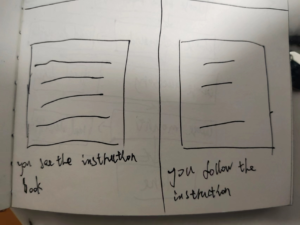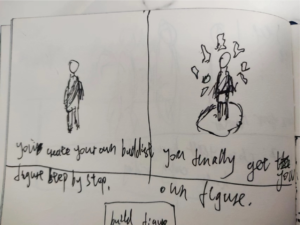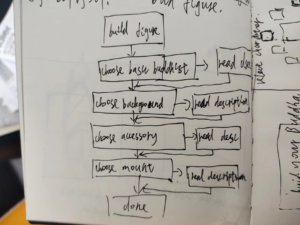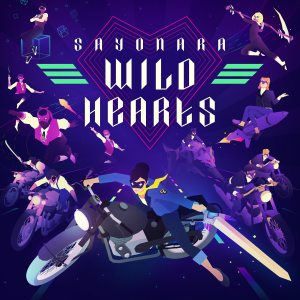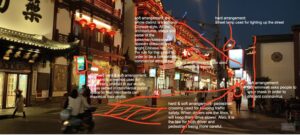Guide 2 project
presentation: https://docs.google.com/presentation/d/1a2H6gPsT7QdK8xzMEh_cj6YjNvG5kSBwQP3ckl5SYR0/edit?usp=sharing
Guide link:https://github.com/YunshanJiang/guide2.git
critique: Younger Generation Lost Interest in Buddhist Culture and Art
Intention: I want to share buddhist culture and art with younger generation by merging modern or fashion elements with the basic forms of Buddha, which also gives younger generation more opportunities of knowing buddhist philosophy.
Research trail:
- I had a general looking on different countries Buddhist figures and made the system map: https://itp.nyu.edu/lowres/critex-monika/2022/10/31/topic-2-system-map/
- For the daily practice, by changing some key elements or feature, I made the collage of different countries’ buddhist figures.




- Buddhist figures are various according to different countries and cultures. So I narrow down my research and image resources on Tibetan area Buddhist figure and Chinese Buddhist figure.
4. I did a series of research on natal Buddha 8 patron saints which are common in east Asia. Each of them and their parts have particular meaning. Research note: https://miro.com/app/board/uXjVPFj1a44=/?share_link_id=712752205624
4. After analyzing the traditional buddha figure, my idea was to imitate the layer or structure of buddha figure.
Guide:
Original idea: I tried to make a fiction website that shows disassembled 8 natal Buddha figures and presents each part by 3d models, I redesign the parts and user reconnects them.
After elaborating my guide forms to my brother who are taking the art doctor degree in Japan and one of my friend, he gave me some suggestions. Here is the link of user testing: https://itp.nyu.edu/lowres/critex-monika/wp-admin/post.php?post=3905&action=edit
Finally I decided to make a fictional website for user to DIY their own buddha figures by collage.
Before building buddha, the website show the samples of 8 natal buddhas and explain their meaning and key features.

step one: choose avatar

step two:choose accessories

step three:

final results sample:


bibliography:
- Powers, J. (2009). A bull of a man : Images of masculinity, sex, and the body in indian buddhism. Harvard University Press.
2. Kieschnick, J. & Shahar, M. (2013). India in the Chinese Imagination: Myth, Religion, and Thought. Philadelphia: University of Pennsylvania Press. https://doi.org/10.9783/9780812208924
3. Jones, C.V., ‘Introduction: Buddhism and Its Religious Others’, in C.V. Jones (ed.), Buddhism and Its Religious Others: Historical Encounters and Representations (London, 2022; online edn, British Academy Scholarship Online, 22 Sept. 2022), https://doi.org/10.5871/bacad/9780197266991.003.0001, accessed 8 Nov. 2022.
4.FERGUSON, J. M., KENT, D. W., MCDANIEL, J. T., THOMPSON, A., MAKLEY, C., BERKWITZ, S. C., SCOTT, G. A., JERRYSON, M., ELISON, W., GAMBURD, M. R., LEIDER, J. P., LEDGERWOOD, J., GELLNER, D. N., & JOHNSON, I. C. (2016). LOOKING BACKWARD: Inventing Tradition in the Modern World. In J. Samuels, J. T. McDaniel, & M. M. Rowe (Eds.), Figures of Buddhist Modernity in Asia (pp. 15–56). University of Hawai’i Press. http://www.jstor.org/stable/j.ctvvn6w6.6
5.Leighton, Taigen Dan (1998). Bodhisattva Archetypes: Classic Buddhist Guides to Awakening and Their Modern Expression. New York: Penguin Arkana. pp. 158–205. ISBN 0140195564. OCLC 37211178.
6.[1]常云霞.虚空藏菩萨与“佛法”的故事[J].农家女,2014(4):33-33.
7. Lopez, D. S., & Stone, J. I. (2019). Two buddhas seated side by side : A guide to the lotus sūtra. Princeton University Press.
8.“The Tantra of Caṇḍamahāroṣaṇa”. 84000: Translating The Words of The Buddha. Retrieved 28 November 2022.
9.Pinte, Klaus (2010). Vairocana/Mahāvairocana. obo in Buddhism. doi: 10.1093/obo/9780195393521-0094
